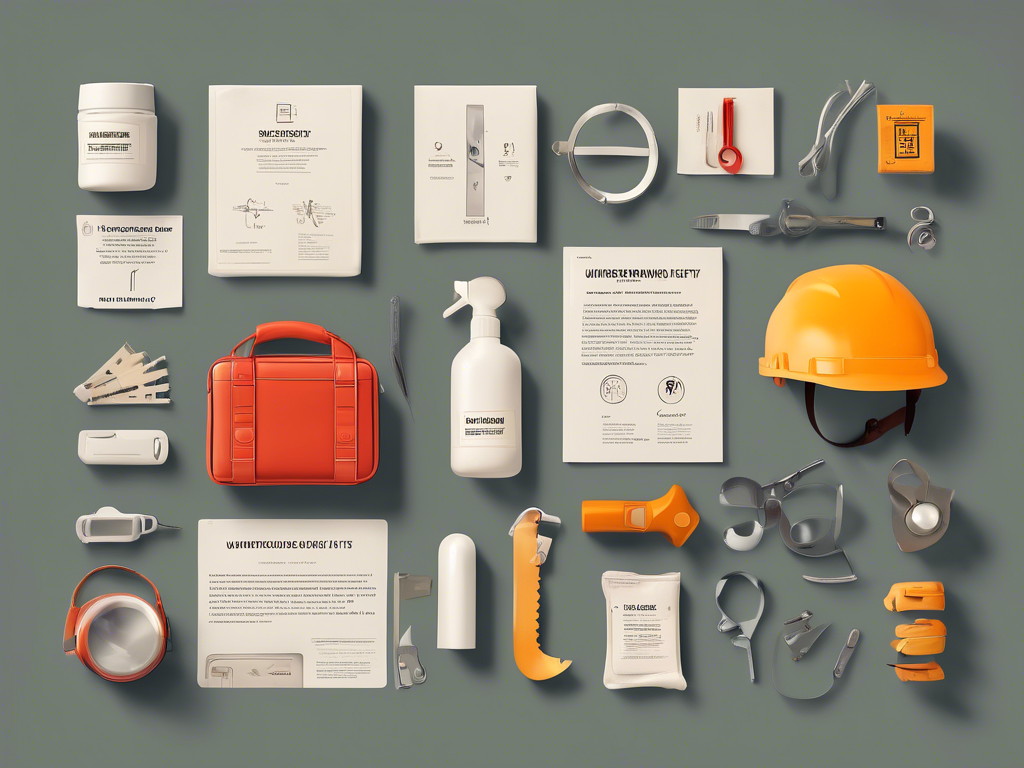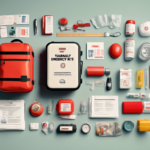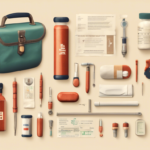In a world where unexpected situations can arise at any moment, being prepared is not just a wise choice; it’s essential. A basic safety kit or first aid kit serves as your first line of defense against minor injuries and emergencies, providing you with peace of mind during unforeseen events. From household accidents to outdoor adventures, having the right supplies on hand can make all the difference in ensuring safety and health.
However, many people are unsure about what constitutes a comprehensive basic first aid kit. With so many options available, it’s easy to overlook essential components that can be crucial in a time of need. In this article, we delve into the fundamental elements that should be part of every basic safety kit. We’ll break down the basic first aid kit components, guiding you through the must-haves and highlighting items you might not even realize you need.
Ultimately, our goal is to empower you to understand the importance of each item, enabling you to choose the right kit tailored to your specific needs. Join us as we explore how to create a customized safety solution that can safeguard your well-being in any situation.
The Core of Safety: Components Every Basic Safety Kit Must Include
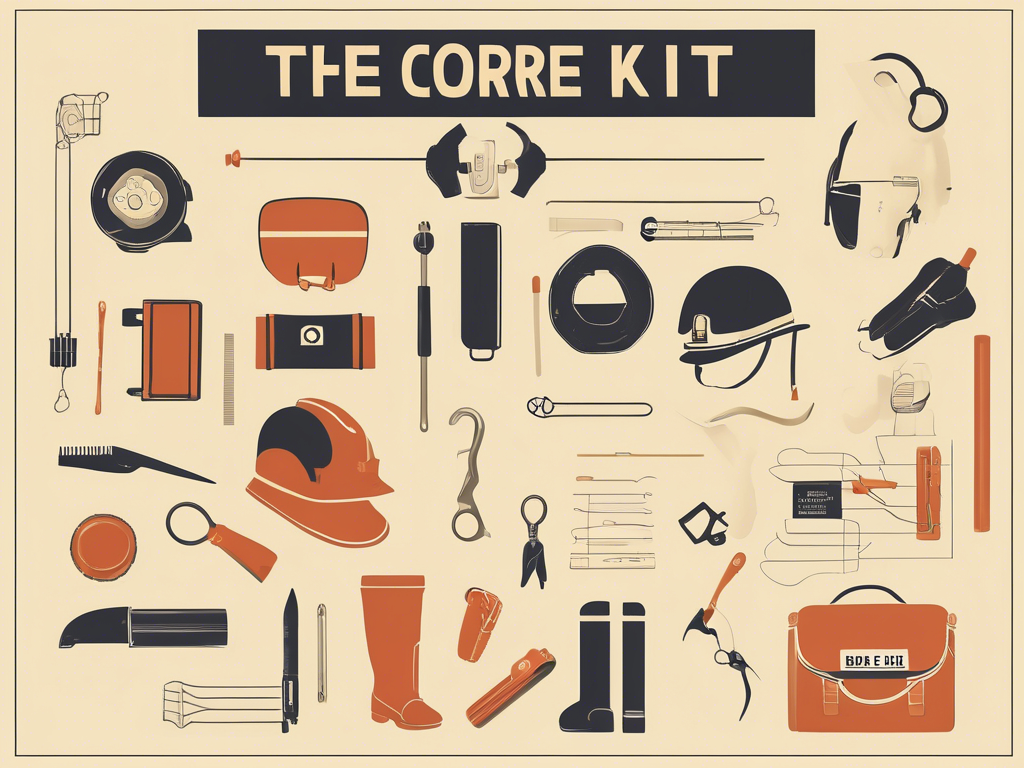
Essential First Aid Supplies
When it comes to building a basic safety kit, having the right first aid supplies is crucial. At a minimum, your kit should include adhesive bandages in various sizes to cover minor cuts and scrapes. Additionally, sterile gauze pads and adhesive tape are necessary for larger wounds. Other vital components include antiseptic wipes to clean injuries and antibiotic ointment to prevent infection. Don’t forget a pair of disposable gloves to maintain hygiene while treating wounds! 🩹
Emergency Medications
Your basic first aid kit components should also feature essential medications. This includes over-the-counter pain relievers such as ibuprofen or acetaminophen to alleviate discomfort from headaches or minor aches. Be sure to add antihistamines for allergic reactions, and keep a supply of any prescription medications that you or your family members may need. Having these on hand can make a significant difference in emergencies! 💊
CPR and Resuscitation Tools
In any comprehensive basic safety kit, having CPR tools is paramount. A CPR face shield or mask allows for safe mouth-to-mouth resuscitation while protecting both the rescuer and the patient. Additionally, including an emergency blanket can help maintain body temperature during a crisis. These tools provide reassurance and potentially save lives in serious situations. 🌡️
Tools for Emergency Care
A few simple tools can enhance the effectiveness of your basic safety kit. Consider adding a pair of scissors, which can be used to cut clothing away from injuries, and tweezers for removing splinters or debris. A digital thermometer is also beneficial for checking for fevers. Lastly, ensure your kit contains a flashlight with extra batteries, as emergencies often occur in low-light conditions. 🔦
Instructions and Documentation
To maximize the utility of your basic first aid kit components, include a manual with instructions on how to perform basic first aid and CPR. A small notebook can also be helpful for jotting down important medical information, such as allergies and emergency contacts. Having these resources readily available ensures everyone can act quickly and effectively in an emergency. 📒
From Bandages to Antiseptics: A Breakdown of Basic First Aid Kit Essentials
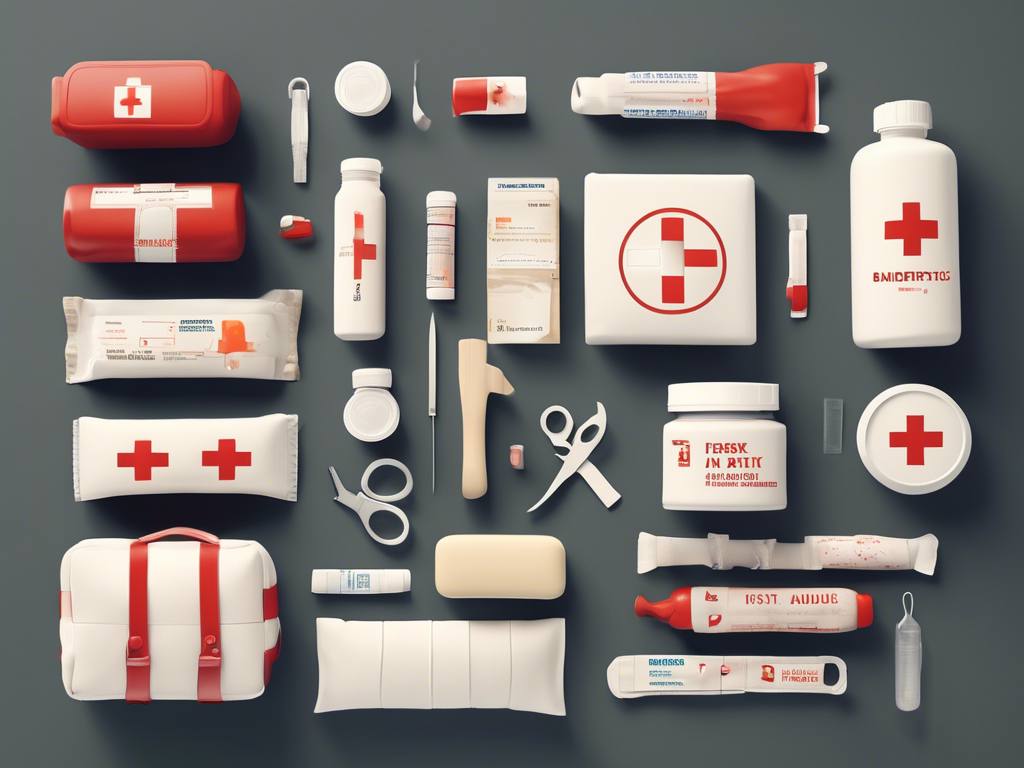
The Importance of Adhesive Bandages
Adhesive bandages are fundamental components of any basic first aid kit. These versatile supplies come in various sizes, making them suitable for different types of injuries, from small cuts to larger abrasions. When selecting adhesive bandages, consider options with waterproof properties to ensure they stay secure even when wet. Keep a variety of shapes and sizes to accommodate the diverse needs of your family or group. They provide immediate relief and protection, allowing wounds to heal without further risk of infection. 🩹
Antiseptics: The Key to Infection Prevention
Incorporating antiseptics into your basic first aid kit components is crucial for maintaining hygiene and preventing infections. Look for antiseptic wipes, solutions, or sprays that contain ingredients like alcohol or hydrogen peroxide. These products help clean wounds effectively by removing dirt and bacteria. Always remember to apply antiseptics before covering any injuries with bandages to ensure a safe healing environment. Keeping your antiseptics sealed and stored away from direct sunlight will also extend their shelf life! ✨
Gauze Pads and Tape: For Larger Wounds
For more significant injuries that require a little extra care, gauze pads and adhesive tape are essential parts of your basic safety kit. Gauze pads come in various sizes and can absorb blood and other fluids, making them perfect for more severe cuts. Use the adhesive tape to secure the gauze in place, ensuring that it stays put while providing necessary pressure to stop bleeding. This combination allows for optimal care, especially in emergencies where larger wounds are involved. 🩸
Antibiotic Ointments: A Layer of Protection
Another essential addition to your basic first aid kit is antibiotic ointment. Products like Neosporin can protect minor cuts and scrapes from infection, creating a barrier against harmful bacteria. Applying a thin layer of antibiotic ointment before covering the wound promotes faster healing and reduces the risk of complications. Always check expiration dates on ointments in your kit to ensure effectiveness, especially if they have been sitting for a while! 🛡️
Scissors and Tweezers: Necessary Tools
When dealing with injuries, having the right tools can make all the difference. A pair of scissors is invaluable for cutting tape, gauze, or clothing away from a wound. Tweezers serve a different purpose: they can be used to remove splinters or foreign objects from the skin. Including these tools in your basic first aid kit components ensures that you are well-equipped to handle various situations effectively. Remember to choose stainless steel options for durability and ease of cleaning! ✂️
Regular Maintenance of Your First Aid Kit
Lastly, it’s important to regularly check and maintain your basic safety kit. Make it a habit to inspect your kit every few months, looking for expired items, depleted supplies, or any necessary replacements. This practice ensures that your first aid essentials are always ready for use in case of an emergency. Keeping your kit organized and easily accessible will also help you act quickly when needed! 📅
How to Choose the Right Basic Safety Kit for Your Needs
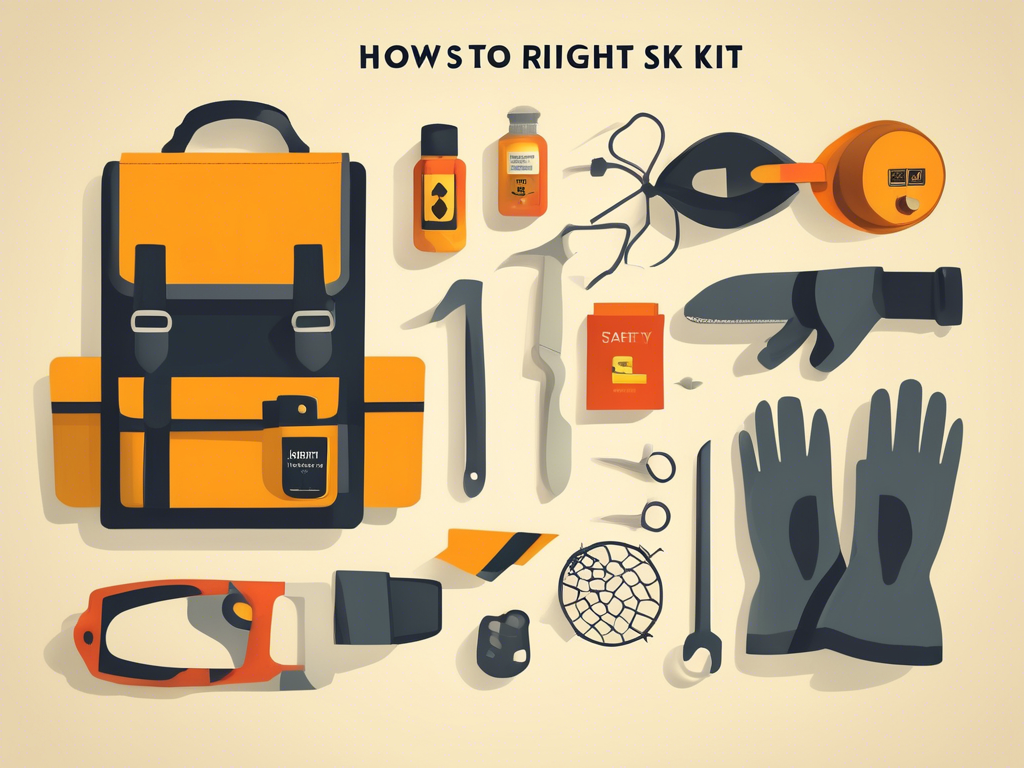
Assess Your Environment
When selecting a basic safety kit, the first step is to assess your environment and potential risks. Consider factors like whether you live in an urban or rural area, your proximity to medical facilities, and common hazards (e.g., natural disasters, workplace injuries). Understanding these factors will help you determine the adequacy of the basic first aid kit components needed for your specific situation. 🏙️🌲
Evaluate Personal and Family Needs
Each family member may have unique health concerns that necessitate tailored supplies in your basic safety kit. For example, if someone in your household has allergies, ensure that your kit includes antihistamines. Similarly, if you have small children, consider adding child-friendly medications. Make a checklist of individual needs, including any prescription medications, to enhance the effectiveness of your basic kit. 👪📝
Consider Size and Portability
The size and portability of your basic safety kit are also critical factors. If you frequently travel or engage in outdoor activities, opt for a compact kit that is easy to carry. On the other hand, a larger kit with more comprehensive supplies can be ideal for home use or emergency preparedness. Always choose a kit with sturdy packaging that protects components from damage while being user-friendly. 🎒🔦
Check for Comprehensive Coverage
Ensure that your basic safety kit contains a comprehensive range of supplies. Look for kits that include not just first-aid essentials but also items such as CPR tools, emergency medications, and instructions. A well-rounded kit provides peace of mind and ensures you are prepared for various scenarios. Consider consolidating multiple kits or customizing one based on your personal requirements! 📋✅
Budget Wisely
Finally, budgeting plays a vital role in selecting a basic safety kit. Quality kits vary in price, so it’s essential to find a balance between affordability and comprehensiveness. Some kits may contain bulk items that are less expensive, while others offer specialized supplies that come at a premium. Invest in a kit that meets your needs without breaking the bank, ensuring you have the essentials ready when emergencies arise! 💰🛠️
Essential Components You Didn’t Know You Needed in Your Basic Safety Kit

The Importance of a Multi-Tool
A multi-tool can be a game changer in your basic safety kit. These versatile devices often combine several tools, such as pliers, screwdrivers, and knives, into one compact package. They are invaluable during emergencies, allowing you to perform various tasks without needing multiple individual tools. Whether you’re fixing equipment or addressing unforeseen challenges, having a multi-tool ensures you’re prepared for anything! 🛠️
Emergency Whistle: A Signal for Help
An emergency whistle is a small but potent addition to your basic safety kit components. In situations where you may be trapped or lost, a whistle can be heard from a greater distance than your voice. It allows you to signal for help without using too much energy, making it especially useful in outdoor scenarios or disaster situations. Consider adding a whistle to your kit to enhance communication in emergencies! 📣
Water Purification Tablets
Access to clean water is crucial during an emergency, and water purification tablets can make a significant difference. These tablets quickly treat contaminated water, making it safe for drinking. Including them in your basic safety kit ensures that you’re prepared for situations where clean water might not be readily available, especially during natural disasters or while camping. Just a few tablets can safeguard your hydration needs! 💧
Portable Phone Charger
In today’s digital age, a portable phone charger is essential for any basic safety kit. During emergencies, communication is key, and having a charged phone can be critical for reaching out for help or finding information. Look for compact chargers with good battery capacity, so you can keep your phone powered without taking up much space. Staying connected can make all the difference when you need assistance! 🔋
Personal Hygiene Supplies
Don’t overlook the importance of personal hygiene supplies in your basic safety kit components. Items like hand sanitizers, moist towelettes, and feminine hygiene products are essential for maintaining cleanliness during emergencies. Keeping these items handy helps prevent infections and ensures you can take care of your personal needs, even in unexpected situations. Consider adding a small pouch of hygiene essentials to your kit for peace of mind! 🧼
Emergency Contact Information
Including a list of emergency contacts in your basic safety kit is crucial for quick access during a crisis. Make sure to note down important numbers, such as family members, friends, or local emergency services. You can also include medical information, like allergies or chronic conditions, which can assist rescuers in providing appropriate care. This simple addition can be lifesaving, helping you act swiftly when needed! 📞
Understanding the Importance of Each Item in Your Basic First Aid Kit
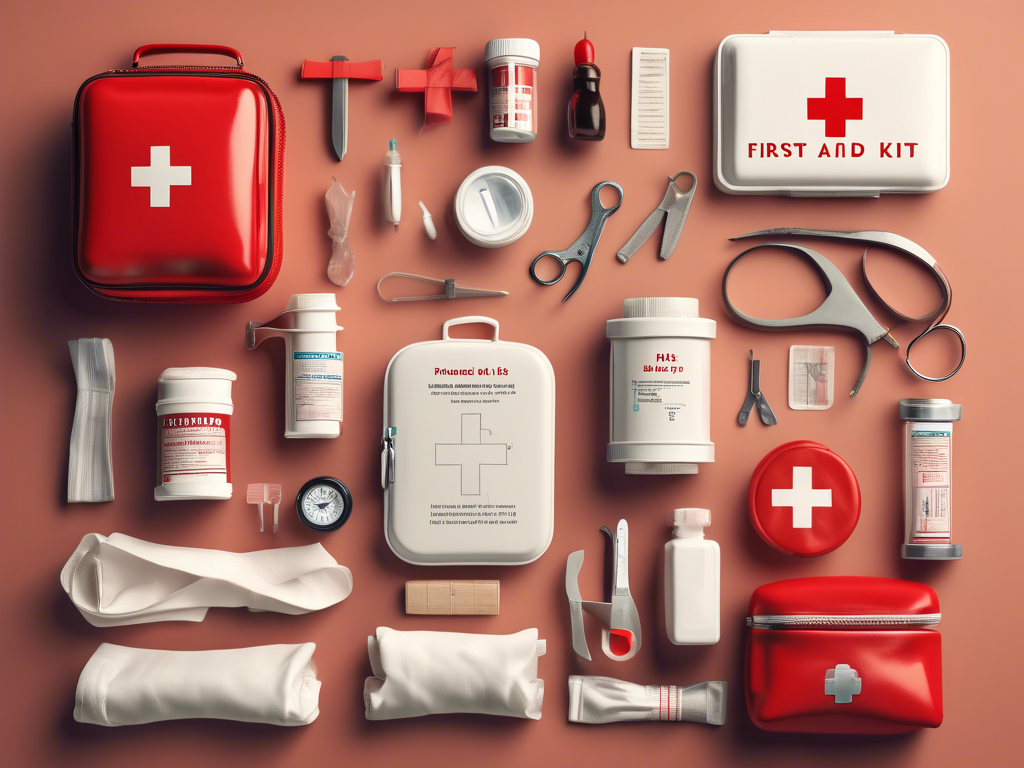
The Role of Adhesive Bandages
Adhesive bandages are foundational components of any basic first aid kit. Their primary function is to protect minor cuts and scrapes, promoting healing and safeguarding against infections. They come in various shapes and sizes, which makes it essential to include options tailored for different injuries. Opt for waterproof adhesive bandages, as they keep wounds dry and safe regardless of the situation, adding an extra layer of protection! 🩹
Why Antiseptic Wipes Are Essential
Incorporating antiseptic wipes into your basic first aid kit components is critical for infection prevention. These wipes help cleanse wounds effectively, removing dirt and bacteria that could impede healing. Look for antiseptic products that contain alcohol or iodine to ensure maximum effectiveness. Always have these at hand before applying bandages to cuts or scrapes, as maintaining hygiene is key to a safe recovery process! ✨
Gauze Pads: Crucial for Serious Injuries
For larger wounds requiring additional care, gauze pads are indispensable in your basic safety kit. They are designed to absorb blood and other fluids, acting as a barrier against contaminants. Pair them with adhesive tape to secure the gauze in place, ensuring it remains effective while applying necessary pressure to stop bleeding. This combination is crucial for managing more significant injuries effectively. 🩸
The Importance of a Digital Thermometer
A digital thermometer is a simple yet vital tool in your basic first aid kit. It allows you to monitor body temperature accurately, which can be essential in assessing conditions such as fever or infections. Quick access to this tool enables timely decisions regarding medical care if symptoms worsen. A reliable thermometer is an investment in your kit that helps catch potential health issues early! 🌡️
Emergency Instructions: Your Lifeline
Including emergency instructions or a first-aid manual in your basic first aid kit components ensures that everyone knows how to respond in different situations. A well-documented guide can provide step-by-step procedures for common scenarios, such as treating burns or performing CPR. Additionally, consider adding a notebook to record important medical information about family members, such as allergies or chronic conditions. Preparation can make all the difference when every second counts! 📒
Regular Review and Maintenance
Lastly, the regular review and maintenance of your basic safety kit are crucial for its effectiveness. Make it a practice to check your kit at least every few months to replace expired items or replenish depleted supplies. This upkeep ensures that your first aid essentials are always ready for use when emergencies arise. Keeping your kit organized and easily accessible will empower you to act quickly when needed! 📅
Top 5 Must-Have Items for a Comprehensive Basic Safety Kit

Adhesive Bandages: Essential for Minor Injuries
Adhesive bandages are fundamental components of any basic safety kit. They provide immediate relief by protecting small cuts and abrasions from dirt and bacteria. When stocking your kit, ensure to include a variety of sizes and types, such as waterproof options, which can stay secure even in wet conditions. This versatility ensures you can address various minor injuries quickly and effectively. 🩹
Gauze Pads and Adhesive Tape: For Larger Wounds
For more serious injuries, gauze pads paired with adhesive tape are crucial in your basic first aid kit components. These items work together to absorb blood and secure the dressing in place. Keep several different sizes of gauze pads on hand to accommodate various injury types, and ensure that the adhesive tape is strong enough to hold securely during movement. This combination will help manage larger wounds properly and promote effective healing. 🩸
Antiseptic Wipes: Key for Infection Control
Incorporating antiseptic wipes into your basic safety kit is vital for maintaining hygiene and preventing infections. Look for wipes that contain alcohol or iodine, as they effectively cleanse wounds before applying dressings. Having these wipes handy ensures that you can prepare the injury site properly before covering it, which significantly increases the chances of successful recovery without complications. ✨
Emergency Blanket: Essential for Protection
An emergency blanket, also known as a space blanket, is an essential item in any basic safety kit. These lightweight yet thermal blankets retain body heat in critical situations, making them invaluable during emergencies such as outdoor mishaps or severe weather conditions. Their compact size allows for easy storage, ensuring you have an extra layer of warmth when needed. 🌡️
First Aid Manual: Your Guide in Emergencies
Including a first aid manual in your basic first aid kit components is a wise decision. This guide provides step-by-step instructions on how to handle various injuries and emergencies, from treating burns to performing CPR. Having this resource readily available can make all the difference in a crisis, equipping you with the knowledge to act swiftly and efficiently. Always review the manual periodically to stay updated on best practices! 📒
Creating a Customized Basic Safety Kit: What You Should Consider
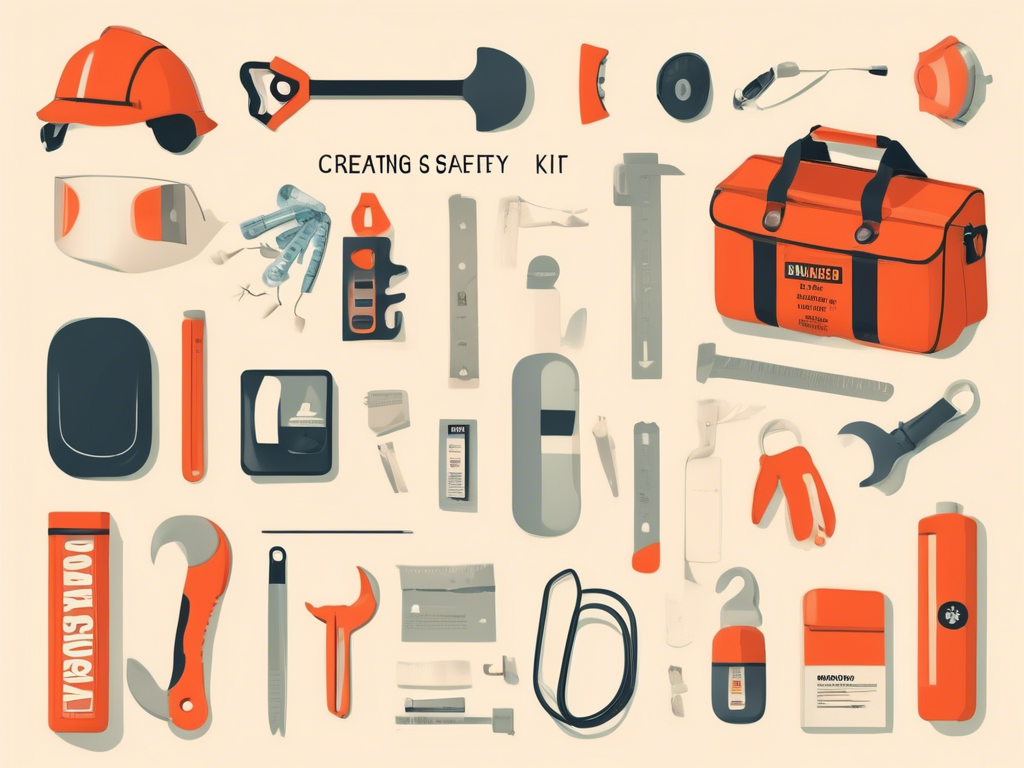
Identify Personal Needs
When creating a basic safety kit, the first step is to evaluate your personal and family needs. Each individual may have specific health concerns or conditions requiring tailored supplies. For instance, if someone has allergies, ensure to include antihistamines. Make a checklist of relevant medications, including prescription drugs, to guarantee that your kit meets everyone’s needs. This personalized approach enhances the kit’s effectiveness during emergencies! 👪📝
Consider Your Environment
Your environment plays a significant role in determining what should be included in your basic safety kit. Consider local risks such as natural disasters (earthquakes, floods) or common situations (sports injuries) that might arise. Living in rural areas might require additional supplies like tools for outdoor survival, while urban settings may focus more on personal safety items. Tailoring your kit based on your surroundings ensures you’re prepared for potential emergencies! 🏙️🌲
Selecting the Right Size and Portability
The size of your basic safety kit is crucial, especially when considering where it will be stored or how it will be transported. For home use, a larger kit can accommodate a wider range of supplies. Conversely, if you travel frequently or engage in outdoor activities, opt for a compact and portable version. Ensure it fits comfortably in your vehicle or backpack without compromising on the essential components needed during emergencies. 🎒🔦
Assess Essential Components
While customizing, take stock of essential components that every basic safety kit should have. Key items include:
– Adhesive bandages (various sizes)
– Sterile gauze pads and adhesive tape
– Antiseptic wipes
– A digital thermometer
– CPR tools like face shields
By considering these components and integrating them into your kit, you can handle a wide array of minor injuries and emergencies effectively! 🩹🩸
Maintenance and Regular Updates
A customized basic safety kit must be maintained regularly. Schedule checks every few months to replace expired items or replenish depleted supplies. This practice ensures that your kit remains functional and ready for use when emergencies strike. Additionally, staying updated with new first aid guidelines or adding new components will enhance the preparedness of your kit over time. Keeping it organized also facilitates quick access during urgent situations! 📅✨
Emergency Preparedness: Why Your Basic First Aid Kit Matters
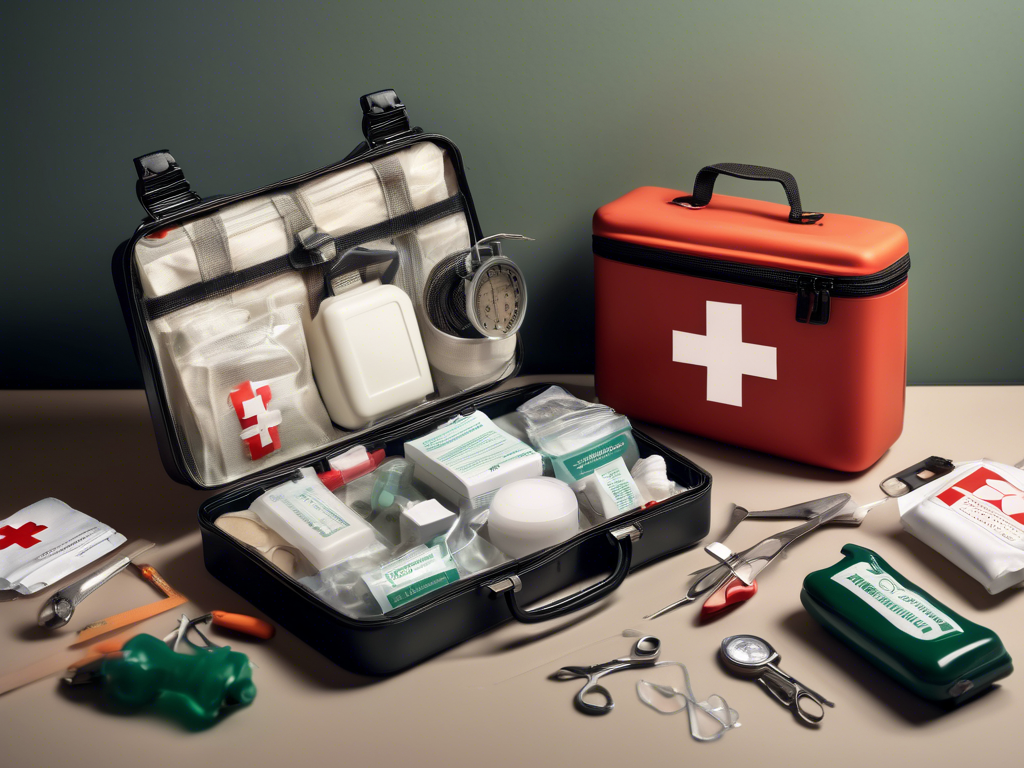
The Foundation of Safety in Emergencies
A well-stocked basic first aid kit serves as a foundational element in emergency preparedness. In unexpected situations, having the right supplies on hand can mean the difference between effective care and complications. Whether it’s for minor cuts, allergic reactions, or more serious injuries, your basic safety kit should include essential components that provide immediate relief and support until professional help is available. By preparing ahead of time, you empower yourself to act confidently when it counts! ⏳
Key Components That Make a Difference
Understanding the specific basic first aid kit components is crucial. Important items include:
– **Adhesive bandages** for minor wounds
– **Sterile gauze pads** and **adhesive tape** for larger injuries
– **Antiseptic wipes** to prevent infection
– **CPR tools**, such as face shields, for life-saving situations
These components not only facilitate immediate treatment but also ensure that you are equipped to handle various medical scenarios effectively. Keeping these items organized and readily available ensures swift access during emergencies! 🩹
Why Routine Checks Are Essential
Regular maintenance of your basic safety kit is critical for its effectiveness. Items can expire, get used up, or deteriorate over time. Set a reminder to check your kit every few months to replenish any missing supplies, replace expired items, and assess overall readiness. This routine ensures that your basic first aid kit remains fully stocked and functional, allowing you to act quickly when faced with an emergency situation! 📅
Training and Knowledge: The Key to Effective Usage
Having a basic first aid kit is just the beginning; knowing how to use it is equally important. Consider taking a first aid and CPR course to understand how each component works. Knowledge empowers you to respond appropriately in emergencies, enhancing the effectiveness of your kit. When everyone in your household is informed about how to utilize the basic first aid kit components, it fosters a culture of safety and preparedness! 📚
Importance of Personalization
Finally, consider personalizing your basic safety kit based on individual family needs. Different people might have unique health concerns that necessitate additional supplies, such as allergy medications or specialized dressings. Tailoring your kit ensures that you can address specific medical situations more effectively, making your basic first aid kit not only comprehensive but also adaptable to your family’s unique requirements! 👪❤️
The Role of Basic Safety Kits in Everyday Health and Safety
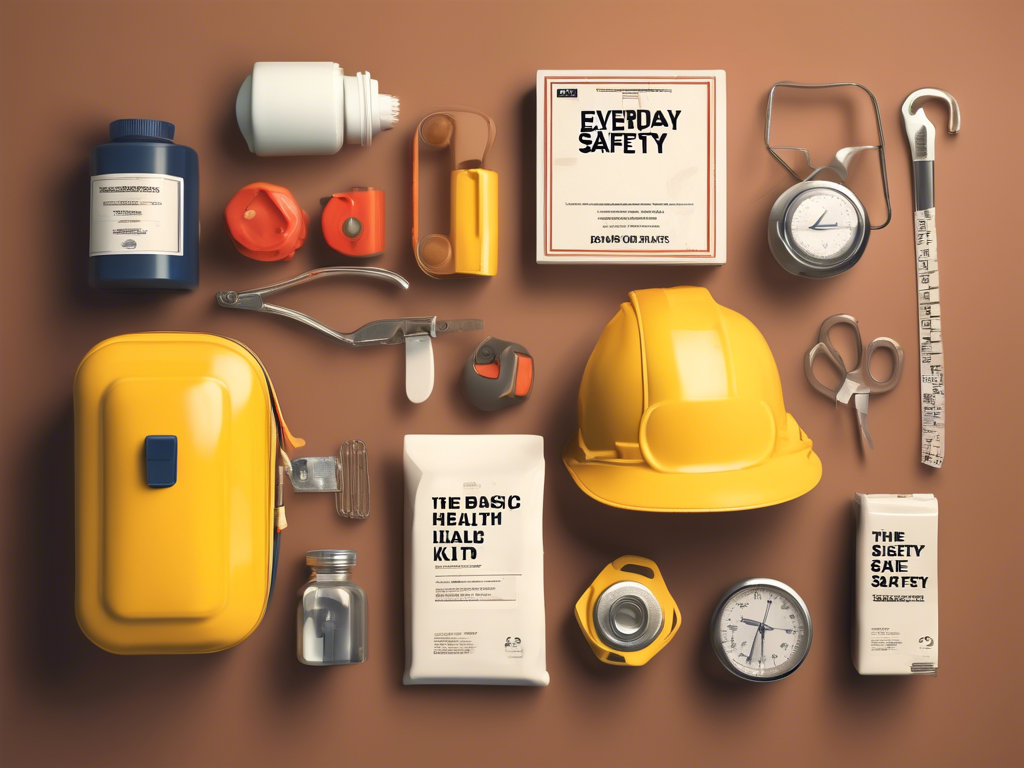
Why Every Household Needs a Basic Safety Kit
A basic safety kit is essential for every household, serving as the first line of defense against accidents and health emergencies. Whether it’s a minor scrape, an allergic reaction, or a more serious injury, having the right supplies on hand can make a significant difference. These kits empower individuals to manage everyday mishaps effectively, providing immediate care that can prevent conditions from worsening while awaiting professional assistance. By ensuring your home is equipped with a comprehensive basic first aid kit, you are taking proactive steps towards safeguarding the health and well-being of your family! 🏡🩹
Building Confidence for Emergency Situations
Having a well-stocked basic safety kit not only provides physical components for immediate care but also enhances the confidence of those who may need to respond in emergencies. When a situation arises, knowing that you are prepared with essential supplies like adhesive bandages, antiseptic wipes, and CPR tools can significantly reduce panic. Familiarizing yourself with the basic first aid kit components will enable you to act swiftly and efficiently, thereby mitigating injury severity and improving outcomes during critical moments. 📚💪
Preparedness for Various Scenarios
A thoughtfully assembled basic safety kit prepares you for a wide array of scenarios. From common household accidents like cuts and burns to potential outdoor emergencies like insect bites or allergic reactions, your kit should encompass versatile supplies. Key items may include:
– Adhesive bandages
– Gauze pads and adhesive tape
– Antiseptic wipes
– Digital thermometer
This versatility ensures that you are not only equipped to handle everyday situations but also prepared for unexpected events that could disrupt normal life! 🌳🔦
Promoting Preventive Health Measures
Incorporating a basic safety kit into your daily routine promotes preventive health measures among family members. Regularly checking and using items from the kit encourages awareness of injuries, hygiene practices, and the importance of addressing health concerns promptly. This culture of preventative care can lead to fewer complications and quicker recovery times following minor incidents. Adding a first aid manual to your kit can further educate your family on how to handle various situations, empowering them with knowledge for better health management. 📒✨
Regular Maintenance: Ensuring Your Kit is Always Ready
To maximize the effectiveness of your basic safety kit, maintenance is key. Regularly review the contents to replace expired items and replenish depleted supplies. Make it a habit to inspect your kit every few months, ensuring it remains ready for any situation. This practice not only keeps your supplies up to date but also reinforces the importance of preparedness within your household, fostering a sense of security and readiness to respond to emergencies at all times. 📅🔄
Summing up
In summary, a well-equipped basic safety kit is an invaluable asset that everyone should have at their disposal. By comprehensively understanding the basic first aid kit components—from bandages and antiseptics to more specialized items—you become more capable of responding effectively to emergencies. Moreover, recognizing the importance of each item ensures that you are not just throwing together supplies but creating a kit that truly meets your needs.
As we’ve discussed, preparedness goes beyond merely having a kit in your home or car. It is about educating yourself on how to use each item effectively and understanding the role these supplies play in everyday health and safety. The broader implications of being prepared can lead to reduced panic during emergencies and better outcomes for those involved.
As you reflect on the insights shared in this article, consider taking proactive steps toward enhancing your own basic safety kit. Evaluate what you have, identify gaps, and don’t hesitate to customize your kit to fit your lifestyle. Remember, being prepared is not just an option; it’s a responsibility to yourself and those around you. So, take action today—ensure you’re ready for whatever life throws your way!
